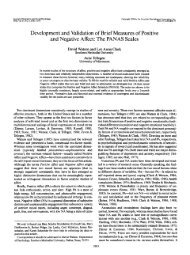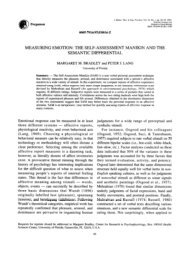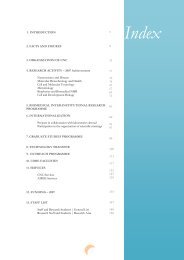Annual Report of Activities CNC 2008 - Center for Neuroscience and ...
Annual Report of Activities CNC 2008 - Center for Neuroscience and ...
Annual Report of Activities CNC 2008 - Center for Neuroscience and ...
Create successful ePaper yourself
Turn your PDF publications into a flip-book with our unique Google optimized e-Paper software.
Area D | MicrobiologyCoordinator | Milton CostaGeneral ObjectivesThe Extreme Environment Group will gain a better underst<strong>and</strong>ing <strong>of</strong> the microbial diversity in geothermalareas, hypersaline environments <strong>and</strong> extremely alkaline springs. One <strong>of</strong> the primary objectives involvesthe study <strong>of</strong> mechanisms that confer radiation <strong>and</strong> desiccation resistance in species <strong>of</strong> the genusDeinococcus <strong>and</strong> Rubrobacter. We are also studying the population structure <strong>of</strong> Legionella species innatural environments to define clones that will cause colonization <strong>of</strong> man‐made fixtures <strong>and</strong> cause disease.Another line <strong>of</strong> research focuses on the characterization <strong>of</strong> the pathways <strong>for</strong> the synthesis <strong>of</strong> compatiblesolutes in hyperthermophiles. This lead us to examine the synthesis <strong>of</strong> the essential lipopolysaccharides inMycobacterium species.The Yeast Research Group is unraveling the resistance <strong>of</strong> C<strong>and</strong>ida albicans to macrophages as well as theepidemiology <strong>of</strong> yeast infections in a local hospital.Main AchievementsThe Extreme Environments Group has described a large number <strong>of</strong> novel species, one <strong>of</strong> which we namedHaloplasma contractile isolated from a deep sea brine represents a completely new bacterial phylum.Among other organism described was the first anaerobic member <strong>of</strong> the archaeal family Halobacteriaceae.It is also the first non‐pigmented strain know.Our research has lead to the discovery a three new pathways <strong>for</strong> the synthesis <strong>of</strong> compatible solutes inthermophiles.57We have also discovered the function <strong>of</strong> the gene product <strong>of</strong> an essential gene in Mycobacterium spp. thatcould lead to the development <strong>of</strong> a very specific antibiotic. The structure <strong>of</strong> this enzyme was elucidated<strong>and</strong> the structure <strong>of</strong> the active site described.He found that Legionella clones in natural environments are different from those in man‐made fixturesthat cause disease.The genome <strong>of</strong> extremely radiation resistant strain <strong>of</strong> Rubrobacter radiotolerans <strong>and</strong> a radiation‐sensitivestrain <strong>of</strong> Deinococcus radiomllies were completely sequenced <strong>and</strong> genes compared with other radiationresistant strains <strong>of</strong> Deinococcus <strong>and</strong> Rubrobacter. The genes <strong>and</strong> replicons <strong>of</strong> genes involved in DNArepair <strong>of</strong> the radiation‐sensitive strain are the same as in the radiation‐resistant Deinococcus strains,leading to the hypothesis that additional factors are involved in the resistance to radiation.The Yeast Research group has achieved the following: Yeast metabolic response to the presence <strong>of</strong>bacterial endotoxin (one paper submitted); Combined effect <strong>of</strong> anti‐fungal cell wall inhibitors in A.infectoria: identification <strong>and</strong> cloning <strong>of</strong> the AiFKS gene <strong>and</strong> its regulator AiRHO; casp<strong>of</strong>unginsusceptibility (2 papers under preparation)






